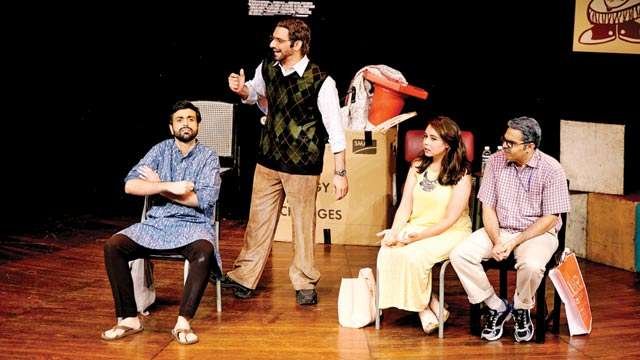A Moral Obligation to Protect the Planet
Legends are the lodestars of history, the marriage of Sir Dorabji Tata with Meherbai on Valentine’s Day of 1898 among the most lyrical of them. Two years later, he gifted her the Jubilee Diamond, the sixth largest diamond in the world, twice as large as the Kohinoor.
Less than fifty months later, Tata Steel, the business in which he played so pivotal a role, was enveloped in a financial crisis; Dorabji and Meherbai pledged the whole of their wealth, including the Diamond, to the Imperial Bank, to make it possible for wages to be paid and not a job sacrificed.
Tata Steel returned to profitability within a quarter-century, Meherbai and Dorabji died soon after, bequeathing their wealth to the Sir Dorabji Tata Charitable Trust – including the Diamond which was sold in 1937, yielding funds to create institutions such as the Tata Memorial Hospital, the Tata Institute of Fundamental Research and the Tata Institute of Social Sciences.
That history came to mind this past Sunday – February 14 – when I opened a carefully wrapped package with my address on it in Russy Sumariwalla’s gentle hand. It was a publication I had not come across earlier, the FEZANA Journal, its cover pictured above, produced by the Federation of Zoroastrian Associations of North America.
As its editor-in-chief, Dr. Dolly Dastoor, notes in her editorial, “FEZANA through its members, young and old, has been supporting the SDGs much before the pandemic started,” a pandemic which, in the phrase of FEZANA President Arzan Sam Wadia, “hit the pause button on our planet.”
The wealth of reading in this issue included a reflective piece by Narges Kakalia on the Cyrus Cylinder and its “glimmers of universality”, notably its injunction that slavery “should be exterminated the world over”, glimmers that brighten each day with our global interdependence on the SDGs reaffirmed.
Interdependence also in a relatively unexpected area, faith. One of the articles brings together three authors, Joshua Basofin of the Parliament of World’s Religions, David Hales, a former Chair of the World Heritage Convention and Michael Terrin, an Oblate of St Benedict.
It notes that “nearly every religious, indigenous, and spiritual tradition teaches a moral obligation to protect the planet“, an obligation which they can help exercise in practice as faith based organizations “control 8% of the habitable land surface of Earth, 5% of all commercial forests, 50% of schools worldwide and 10% of the world’s financial institutions.”
The journal made engrossing reading in the middle of a month which began with World Interfaith Harmony Week. A quick search on the agile website of the Yearbook of the United Nations suggests the General Assembly resolution which established the Day is the only one in the 75 years of United Nations history that makes a direct reference to “God” in the paragraph where it “encourages all States to support, on a voluntary basis, the spread of the message of interfaith harmony and goodwill in the world’s churches, mosques, synagogues, temples and other places of worship during that week, based on love of God and love of one’s neighbour or on love of the good and love of one’s neighbour, each according to their own religious traditions or convictions.”
There is also a reference in a 1966 judgment by the International Court of Justice, in a case challenging South Africa’s occupation of present-day Namibia, with a twist in its tail that “all mankind are children of God, and, consequently, brothers and sisters, notwithstanding their natural and social differences, namely man and woman, husband and wife, master and slave, etc.”
George Macaulay Trevelyan, the historian, whose birthday fell last Tuesday, once cautioned “never tell a young person that anything cannot be done. God may have been waiting centuries for someone ignorant enough of the impossible to do that very thing.”
The FEZANA Journal carried a story about a young girl in Lahore, Pakistan, “a tinkerer by nature, she often got up to her elbows in grease as she absorbed herself in the mechanics of bike repair.”
Some forty years later, and five years ago last week, Nergis Mavalvala “was among the team of scientists whom, for the first time, observed ripples in the fabric of spacetime called gravitational waves.”
She has since been appointed Dean of the School of Science at the Massachusetts Institute of Technology, the first woman to hold the post.
The institutions Dorabji and Meherbai Tata’s bequests helped found continue to engage the young in adventures of discovery; at the Tata Institute of Fundamental Research scientists have noted “what we experience as a child often has a lasting impression on our behaviour throughout the course of our life.
Stressful and adverse experience during early life of an individual can often lead to a lasting vulnerability towards developing psychiatric disorders in adult life, a question particularly pertinent to the current times when depression has emerged as one of the greatest challenges to global health.
In a recent study, the Vaidya lab has tested the idea via switching on the signalling pathway that leads to overactivation of excitatory neurons within the forebrain, using genetically engineered mice.”
And the Tata Institute of Social Sciences is working with the United Nations Development Programme (UNDP) and the Maharashtra state government in India on an “Inclusive Disaster Preparedness and Risk Reduction Programme” in the district of Bhiwandi, focusing specifically on people with disabilities (PWD), it is the first of its kind, mainstreaming pre-disaster vulnerability reduction programme, designed to mainstream disability in disaster management, train and sensitize professionals on disability and emergency response and establish a resource centre providing advisory and informational services for PWD.
The Foundation for Ecological Security, supported by Tata Trusts, aims to create sustainable livelihoods for 38 million rural poor by strengthening local governance and conserving 30 million acres of Commons in India totalling to a fifth of India’s total Commons land.
An indicator of how directly this is related to faith came to mind as I read the “Final Report of the Independent Review on the Economics of Biodiversity” published earlier this month by the government of the United Kingdom; it says “Our economies, livelihoods and well-being all depend on our most precious asset: Nature.
We are part of Nature, not separate from it. We rely on Nature to provide us with food, water and shelter; regulate our climate and disease; maintain nutrient cycles and oxygen production; and provide us with spiritual fulfilment and opportunities for recreation and recuperation, which can enhance our health and well-being. We also use the planet as a sink for our waste products, such as carbon dioxide, plastics and other forms of waste, including pollution.”
Nature and spiritual fulfilment have been at the heart of many festivities around the world last week: the start of the Lunar new year in Asia, the Carnival in Brazil and the Caribbean, Basant Panchami, the celebration of spring, in India which coincides with tribute to Saraswati, the goddess of knowledge, and her injunction to cultivate an organized, clutter-free mind, much like the SDG tree on the FEZANA Journal cover, or the language tree devised by the German linguist August Schleicher, whose birth bicentennial falls today, a model, as Wikipedia the Wise informs us, that “as with species, each language is assumed to have evolved from a single parent or “mother” language, with languages that share a common ancestor belonging to the same language family.”
Could that symbol, the tree, not work for faith as well , its many sturdy branches unfurling from an integral and common whole, each branch sustaining, and being sustained by, the leaves and shoots that from its recesses thrive?
Beethoven, whose 250th birth anniversary we have just celebrated, signed his manuscripts with the letters SDG, standing for Soli Deo Gloria, or “Glory to God Alone”. His momentous music was nurtured in an age where faith had begun to assimilate reason, manifest often in challenges to those who sought to represent the divine rather than divinity itself.
As Eamon Duffy writes in this week’s “The New York Review of Books”, the European reformation owed much to “the burgeoning of charismatic spiritual and apocalyptic movements that seemed to threaten the stability of the institutional Church, and the mounting theological and political challenges to the centralizing authority of the papacy.”
And, writing in the “New Theatre Quarterly” in 2009, Katie Normington, a scholar in the field of drama, and the just appointed Vice Chancellor of De Montfort University in the United Kingdom, UNAI’s hub on SDG 16, observed that “in being treated as religious dramas rather than community plays – plays which evolved from the Church service rather than from a street procession – the sense of communitas disappeared from the staging, and the division of actor and audience space became very apparent.
There are no easy answers: as Dario Fo’s versions suggest, to emphasize the subversive voices of the citizens within the plays seems equally alien in late twentieth-century Britain. If political theatre is an endangered species (or an outdated beast, if that’s how you see it), then Mitchell’s production would seem to suggest that the most we can hope for is an altruistic individualism.”
My college lecturer in history, Dr. “Eric” Kapadia, a gentle and noble Zoroastrian himself, was fond of quoting the Tony Judt axiom that “geography is full of maps, history is full of chaps.” In elaborating the thought, he elevated it from glib to the “glimmer” we spoke of earlier, of the individual’s formidable role, a role far more defined than circumstance, in shaping her own history and, all too often, the histories of those around her.
“Altruistic individualism”, in Dr. Normington’s elegant phrase, allows a shaping that cares, a shaping within a community, whether of faith, geography or vocation, but a shape that draws its imagination and malleability from the reason and conviction, the “dignity and worth” of the individual within whose altruism it has tenancy.





